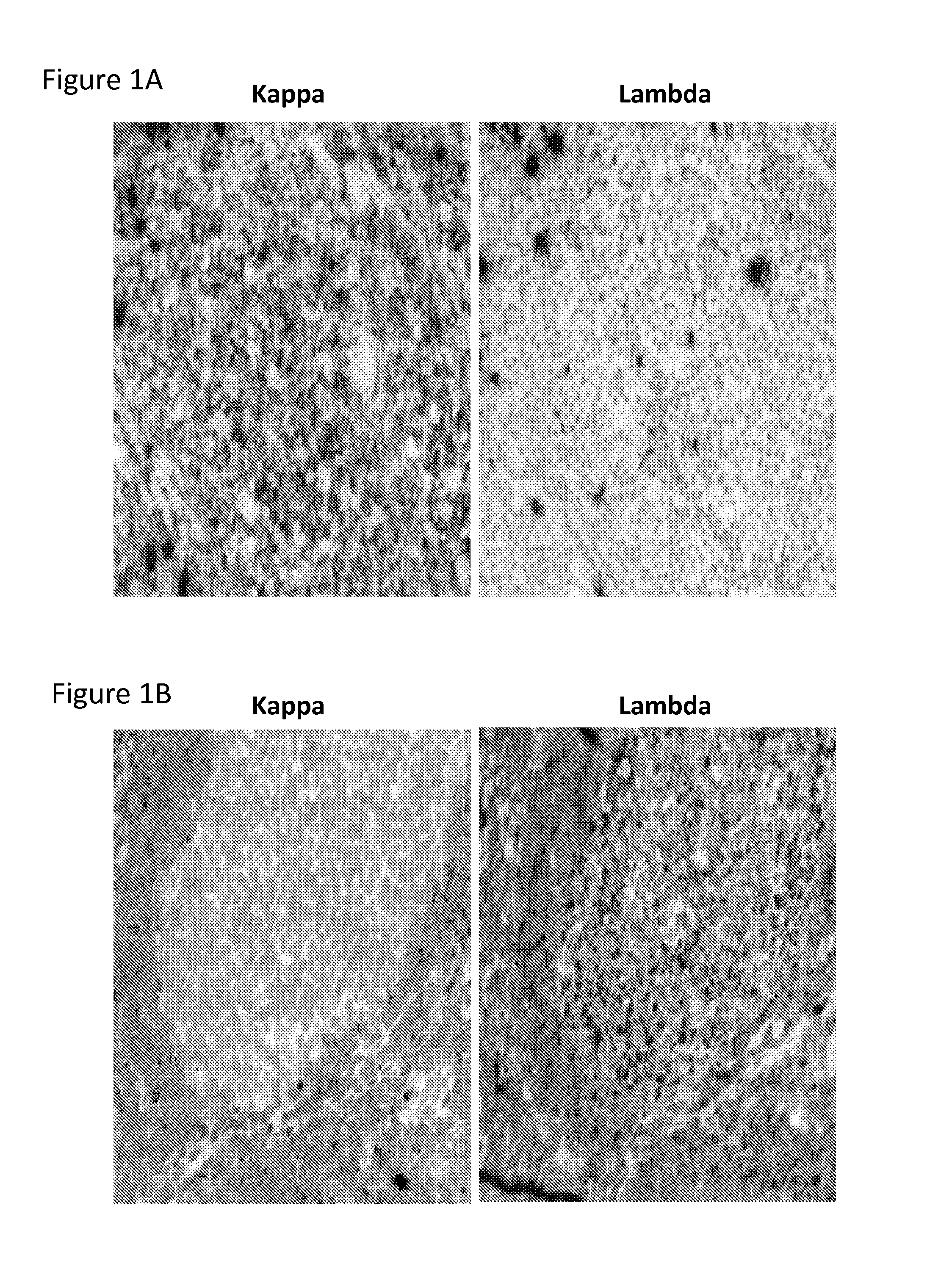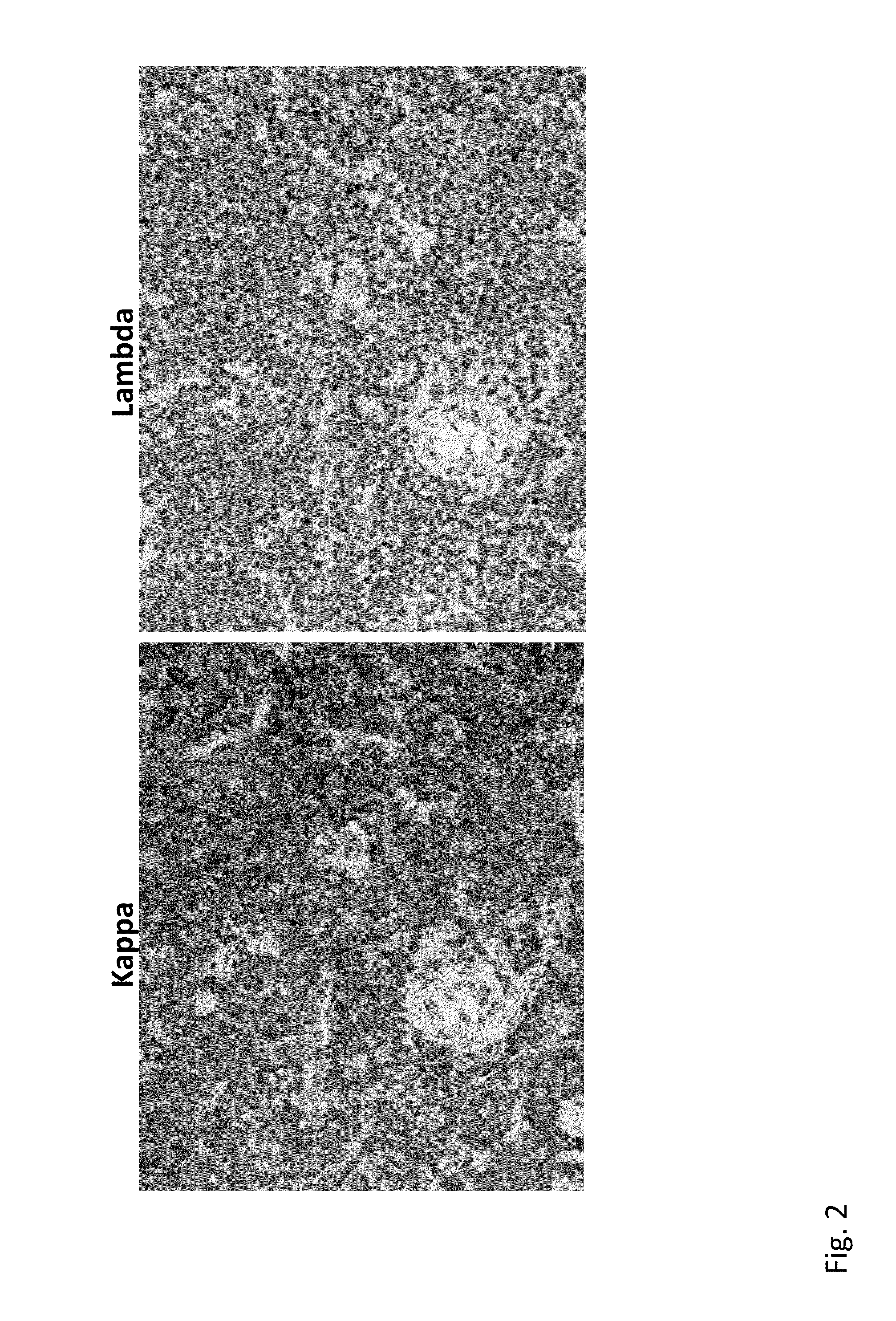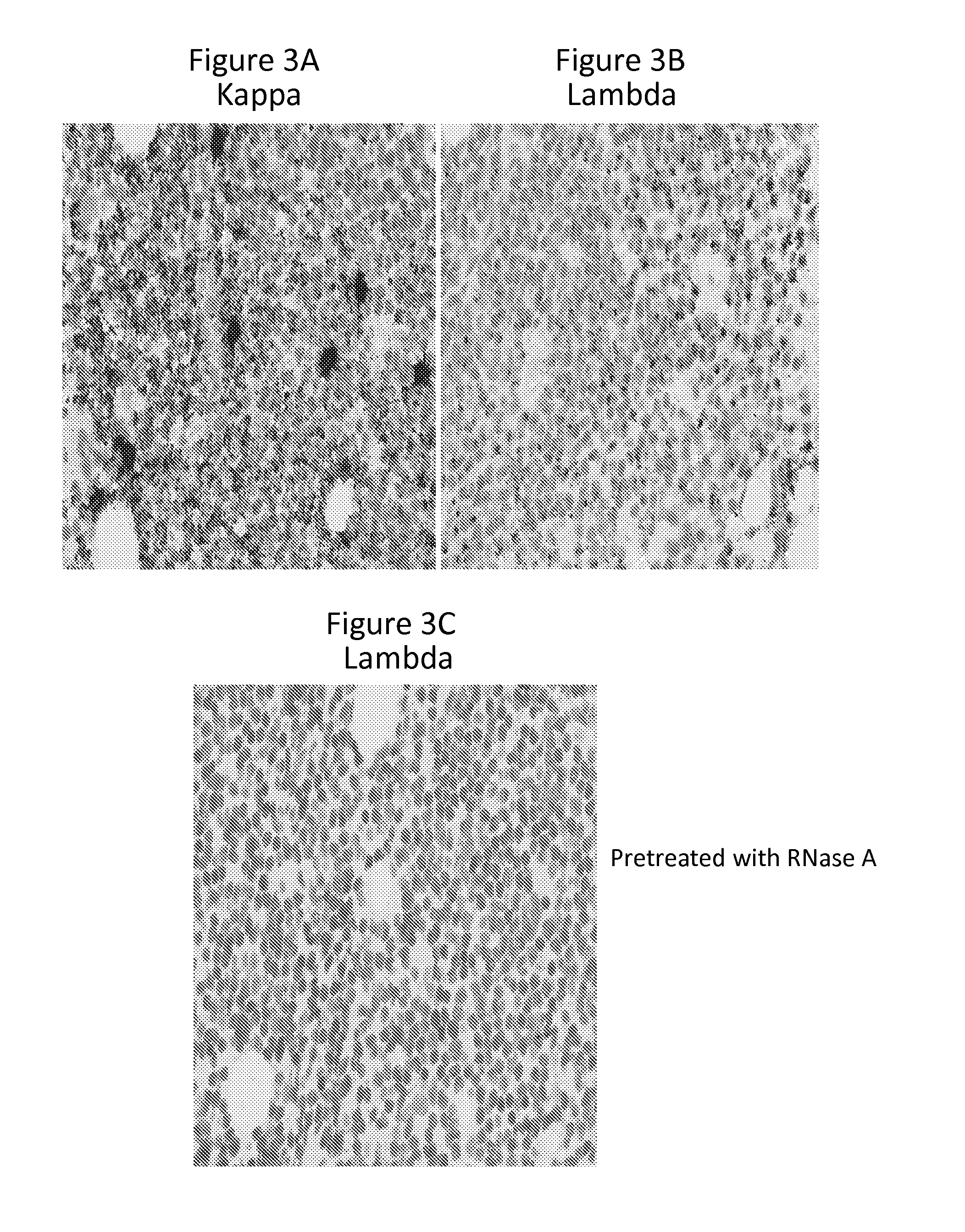Detection of immunoglobulin light chain restriction by RNA in situ hybridization
a light chain restriction and immunoglobulin technology, applied in the field of in situ hybridization assays, can solve problems such as inacceptable clinical management use delay
- Summary
- Abstract
- Description
- Claims
- Application Information
AI Technical Summary
Benefits of technology
Problems solved by technology
Method used
Image
Examples
example
Detection of Immunoglobulin Light Chain Restriction in B Cells Using In Situ Hybridization
[0120]This example describes in situ hybridization assays to detect immunoglobulin light chain restriction in B cells.
[0121]An RNAscope® assay (Advanced Cell Diagnostics) to detect Ig kappa and lambda light chain mRNA for detecting LCR in samples of both benign proliferative lymphoid disorders and B cell neoplasms. RNAscope® probes were designed to target IGKC (immunoglobulin kappa chain constant region) and IGLC (immunoglobulin lambda chain constant region) genes, which encode the constant region of kappa and lambda light chain, respectively. The RNAscope® assay is capable of detecting very low levels of kappa / lambda transcripts (<10 copies / cell) in B cells in human tonsil (Wang et al., 2012). Described below is the application of an RNAscope® assay and development of an interpretation algorithm for LCR detection in B cell proliferative diseases. When tissue sections of a wide variety of lymph...
PUM
| Property | Measurement | Unit |
|---|---|---|
| Tm | aaaaa | aaaaa |
| Tm | aaaaa | aaaaa |
| Tm | aaaaa | aaaaa |
Abstract
Description
Claims
Application Information
 Login to View More
Login to View More - R&D
- Intellectual Property
- Life Sciences
- Materials
- Tech Scout
- Unparalleled Data Quality
- Higher Quality Content
- 60% Fewer Hallucinations
Browse by: Latest US Patents, China's latest patents, Technical Efficacy Thesaurus, Application Domain, Technology Topic, Popular Technical Reports.
© 2025 PatSnap. All rights reserved.Legal|Privacy policy|Modern Slavery Act Transparency Statement|Sitemap|About US| Contact US: help@patsnap.com



